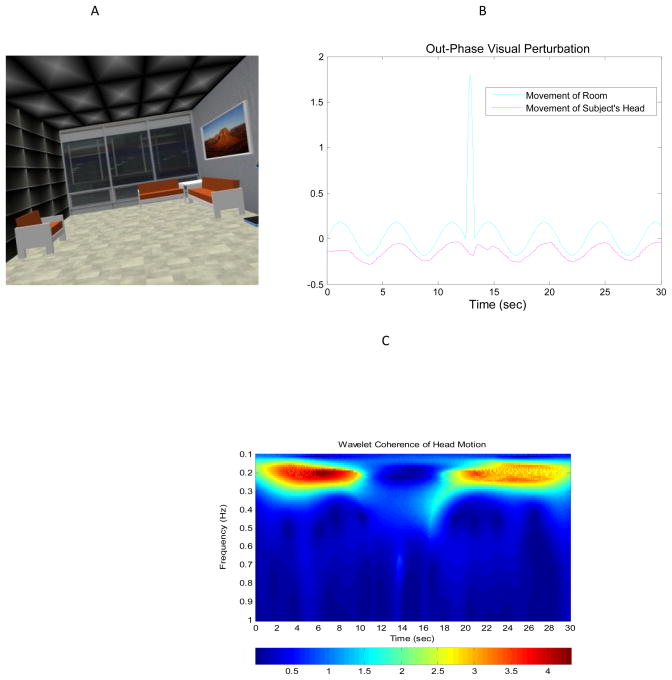Figure 1.
(a) visual stimulus via realistically Virtual “moving room” enable to shift optic flow from Anterior-posterior to Medial-Lateral directions; (b) Time serious of moving room oscillation (.2 Hz) superimposed on a subject’s responses via head motion tracking; (c) wavelet transform depicting the dynamics of head motion/virtual room oscillation and response to visual perturbation. Where: X-axis is time of trial duration (30s); y-axis is the frequency of moving room and the subject’s head oscillation (.2 Hz); Color scale indicates the magnitude of moving room/head motion coherence within .2 Hz frequency cluster.

